
Visit the North Fork Composites factory: The art of blanksmithing
Immerse yourself in the world of rod blanks with a visit to the North Fork Composites factory. Discover the manufacturing process and the cutting-edge technology used.
As part of the Rodhouse-NorthFork Composites "HM at the price of MI" operation, we contacted Gary Loomis' company. We had discussions with Gary and with Alex Maslov, the company's CEO. Alex is a fisherman, but his career path took him to Amazon and Microsoft before arriving at NFC, where he became CEO a few months ago. He's a very nice guy, a good listener, very professional and a no-brainer. In the photo below, it's the crouching hairy guy, Hum Day is on Wednesday evening, when we've got through the hardest part of the week and are starting the second half...^^
 During our last Skype conversation, he gave us a complete video tour of the company, which was just enormous! So, as we like to share when we see something like that, here's a little tour of NFC, just for you!
First of all, the buildings are located in a place that looks really nice: there's greenery, water, space. An old red Chevrolet CK10 pickup from the early Seventies sits in the parking lot. What class!
During our last Skype conversation, he gave us a complete video tour of the company, which was just enormous! So, as we like to share when we see something like that, here's a little tour of NFC, just for you!
First of all, the buildings are located in a place that looks really nice: there's greenery, water, space. An old red Chevrolet CK10 pickup from the early Seventies sits in the parking lot. What class!
 We start with a tour of the offices: Alex's, Gary's, administrative, etc. There are blanks and canes everywhere, a crazy thing! Gary is working on some new models, and there are some Fly blanks lying around. Smells great!
We change buildings and head for what really gets us going: the production department ...
We start with a tour of the offices: Alex's, Gary's, administrative, etc. There are blanks and canes everywhere, a crazy thing! Gary is working on some new models, and there are some Fly blanks lying around. Smells great!
We change buildings and head for what really gets us going: the production department ...
 First stop: the room where the cutter cuts carbon sheets for the day's production. It's a large room kept cool so that the resin in the prepreg (pre-impregnated carbon) sheets doesn't stick or run. This is important to keep handling easy, but it does peel ... He cuts to the precise dimensions of a particular blank. He starts with a rectangular sheet and cuts it to a point on one side. This is the tip. The tighter the cutting angle and the farther down the sheet it starts, the softer the blank will be at the top - progressive, if you like.
First stop: the room where the cutter cuts carbon sheets for the day's production. It's a large room kept cool so that the resin in the prepreg (pre-impregnated carbon) sheets doesn't stick or run. This is important to keep handling easy, but it does peel ... He cuts to the precise dimensions of a particular blank. He starts with a rectangular sheet and cuts it to a point on one side. This is the tip. The tighter the cutting angle and the farther down the sheet it starts, the softer the blank will be at the top - progressive, if you like.
 There's carbon everywhere in there. In rolls, in sheets, everywhere! Alex explains that their materials come from the best suppliers (Toray, etc.), who make the prepregs to their specific NFC specifications.
Alex shows me the difference between IM carbon and HM carbon by tearing two offcuts: on IM, you can clearly see the little glass fibers that stick out when you cut them. Scrim glass, like the vast majority of blanks. Then we move on to the HM, where it's very different: a thin layer of carbon acts as a scrim.
There's carbon everywhere in there. In rolls, in sheets, everywhere! Alex explains that their materials come from the best suppliers (Toray, etc.), who make the prepregs to their specific NFC specifications.
Alex shows me the difference between IM carbon and HM carbon by tearing two offcuts: on IM, you can clearly see the little glass fibers that stick out when you cut them. Scrim glass, like the vast majority of blanks. Then we move on to the HM, where it's very different: a thin layer of carbon acts as a scrim.
 By the way, what is scrim?
Scrim is what makes a blank bend without breaking (to the breaking point, of course!). To visualize it, Gary uses the image of bamboo: there are rings at regular intervals on a bamboo stem. It's these rings (among other things, but we're not here for a botany lesson!) that make a bamboo stalk bend without breaking. The rings prevent the bamboo from ovalizing and collapsing in on itself when it bends. What does this have to do with scrim? It's the same thing: the scrim prevents the blank from ovalizing and collapsing in on itself when bending. It also limits fiber stretching on one side of the blank (the top) and crushing on the other. It's this scrim that gives our favourite toys their bending strength. It's actually a kind of fiber scrim (glass or, more rarely, carbon) bonded to a layer of unidirectional carbon.
Most commercial blanks are made with carbon prepregs that contain a fiberglass scrim. Glass scrim is thicker and heavier. It therefore reduces the blank's sensitivity and overall responsiveness. On his HM (for Haut-Module) blanks, Gary uses a very thin carbon scrim. It's lighter, requires less resin - in short, it's top-of-the-range, and it shows. In the end, an HM blank from NFC is more resonant, more responsive, but also a little softer than the same IM blank, because the scrim is thinner and less resin-intensive.
Back to our tour: once the prepreg sheet has been cut, it is placed on the mandrel by hand. Only the uncut side is glued to the mandrel. The operator (:heart:) ensures that all the prepreg adheres well to the mandrel by pressing it down with an iron. The mandrel is then placed under a machine which rolls the carbon around the mandrel in a circular motion. You can tell that this requires skill and craftsmanship! On the blanks being manufactured that day, a second sheet of prepreg was applied to the first, and the operation repeated.
By the way, what is scrim?
Scrim is what makes a blank bend without breaking (to the breaking point, of course!). To visualize it, Gary uses the image of bamboo: there are rings at regular intervals on a bamboo stem. It's these rings (among other things, but we're not here for a botany lesson!) that make a bamboo stalk bend without breaking. The rings prevent the bamboo from ovalizing and collapsing in on itself when it bends. What does this have to do with scrim? It's the same thing: the scrim prevents the blank from ovalizing and collapsing in on itself when bending. It also limits fiber stretching on one side of the blank (the top) and crushing on the other. It's this scrim that gives our favourite toys their bending strength. It's actually a kind of fiber scrim (glass or, more rarely, carbon) bonded to a layer of unidirectional carbon.
Most commercial blanks are made with carbon prepregs that contain a fiberglass scrim. Glass scrim is thicker and heavier. It therefore reduces the blank's sensitivity and overall responsiveness. On his HM (for Haut-Module) blanks, Gary uses a very thin carbon scrim. It's lighter, requires less resin - in short, it's top-of-the-range, and it shows. In the end, an HM blank from NFC is more resonant, more responsive, but also a little softer than the same IM blank, because the scrim is thinner and less resin-intensive.
Back to our tour: once the prepreg sheet has been cut, it is placed on the mandrel by hand. Only the uncut side is glued to the mandrel. The operator (:heart:) ensures that all the prepreg adheres well to the mandrel by pressing it down with an iron. The mandrel is then placed under a machine which rolls the carbon around the mandrel in a circular motion. You can tell that this requires skill and craftsmanship! On the blanks being manufactured that day, a second sheet of prepreg was applied to the first, and the operation repeated.
 Next, the blank is transferred to another machine, which removes any micro-bubbles. Three metal rollers clamp the blank still on the mandrel. The whole thing rotates at high speed. The blank is then wrapped in thin strips of cellophane and sent off for curing. The baking temperature and pressure in the oven are in-house secrets!
Next, the blank is transferred to another machine, which removes any micro-bubbles. Three metal rollers clamp the blank still on the mandrel. The whole thing rotates at high speed. The blank is then wrapped in thin strips of cellophane and sent off for curing. The baking temperature and pressure in the oven are in-house secrets!
 Once the blank is "baked", the cellophane is removed and it's off to the water sander. A machine does the first pass, then two operators finish the wet sanding by hand. Here too, when you watch the movements, you realize that there's real craftsmanship and know-how involved. That's class!
Once the blank is "baked", the cellophane is removed and it's off to the water sander. A machine does the first pass, then two operators finish the wet sanding by hand. Here too, when you watch the movements, you realize that there's real craftsmanship and know-how involved. That's class!
 Our blank is finished. We apply a sticker to identify it, put it in a plastic blister pack and head for shipping, where Steve Pitcock prepares the shipments.
Our blank is finished. We apply a sticker to identify it, put it in a plastic blister pack and head for shipping, where Steve Pitcock prepares the shipments.
 What we took away from this virtual visit is that North Fork Composites really does things right. Not that we doubted it, given the qualities of the blanks, but this was particularly telling. The employees weren't prepared for the visit, they were in their normal working conditions, and that's precisely what made the experience so valuable.
What we took away from this virtual visit is that North Fork Composites really does things right. Not that we doubted it, given the qualities of the blanks, but this was particularly telling. The employees weren't prepared for the visit, they were in their normal working conditions, and that's precisely what made the experience so valuable.
 We couldn't get all the photos, so we'll try to imitate the sound of a carbon scrim tearing, and show you the real-life bending tests that all blanks undergo before being shipped, but we won't tell you about the machines we're not allowed to talk about, even if we didn't necessarily understand everything.
:mrgreen:
We couldn't get all the photos, so we'll try to imitate the sound of a carbon scrim tearing, and show you the real-life bending tests that all blanks undergo before being shipped, but we won't tell you about the machines we're not allowed to talk about, even if we didn't necessarily understand everything.
:mrgreen:
 A great moment!
A great moment!
 During our last Skype conversation, he gave us a complete video tour of the company, which was just enormous! So, as we like to share when we see something like that, here's a little tour of NFC, just for you!
First of all, the buildings are located in a place that looks really nice: there's greenery, water, space. An old red Chevrolet CK10 pickup from the early Seventies sits in the parking lot. What class!
During our last Skype conversation, he gave us a complete video tour of the company, which was just enormous! So, as we like to share when we see something like that, here's a little tour of NFC, just for you!
First of all, the buildings are located in a place that looks really nice: there's greenery, water, space. An old red Chevrolet CK10 pickup from the early Seventies sits in the parking lot. What class!
 We start with a tour of the offices: Alex's, Gary's, administrative, etc. There are blanks and canes everywhere, a crazy thing! Gary is working on some new models, and there are some Fly blanks lying around. Smells great!
We change buildings and head for what really gets us going: the production department ...
We start with a tour of the offices: Alex's, Gary's, administrative, etc. There are blanks and canes everywhere, a crazy thing! Gary is working on some new models, and there are some Fly blanks lying around. Smells great!
We change buildings and head for what really gets us going: the production department ...
 First stop: the room where the cutter cuts carbon sheets for the day's production. It's a large room kept cool so that the resin in the prepreg (pre-impregnated carbon) sheets doesn't stick or run. This is important to keep handling easy, but it does peel ... He cuts to the precise dimensions of a particular blank. He starts with a rectangular sheet and cuts it to a point on one side. This is the tip. The tighter the cutting angle and the farther down the sheet it starts, the softer the blank will be at the top - progressive, if you like.
First stop: the room where the cutter cuts carbon sheets for the day's production. It's a large room kept cool so that the resin in the prepreg (pre-impregnated carbon) sheets doesn't stick or run. This is important to keep handling easy, but it does peel ... He cuts to the precise dimensions of a particular blank. He starts with a rectangular sheet and cuts it to a point on one side. This is the tip. The tighter the cutting angle and the farther down the sheet it starts, the softer the blank will be at the top - progressive, if you like.
 There's carbon everywhere in there. In rolls, in sheets, everywhere! Alex explains that their materials come from the best suppliers (Toray, etc.), who make the prepregs to their specific NFC specifications.
Alex shows me the difference between IM carbon and HM carbon by tearing two offcuts: on IM, you can clearly see the little glass fibers that stick out when you cut them. Scrim glass, like the vast majority of blanks. Then we move on to the HM, where it's very different: a thin layer of carbon acts as a scrim.
There's carbon everywhere in there. In rolls, in sheets, everywhere! Alex explains that their materials come from the best suppliers (Toray, etc.), who make the prepregs to their specific NFC specifications.
Alex shows me the difference between IM carbon and HM carbon by tearing two offcuts: on IM, you can clearly see the little glass fibers that stick out when you cut them. Scrim glass, like the vast majority of blanks. Then we move on to the HM, where it's very different: a thin layer of carbon acts as a scrim.
 By the way, what is scrim?
Scrim is what makes a blank bend without breaking (to the breaking point, of course!). To visualize it, Gary uses the image of bamboo: there are rings at regular intervals on a bamboo stem. It's these rings (among other things, but we're not here for a botany lesson!) that make a bamboo stalk bend without breaking. The rings prevent the bamboo from ovalizing and collapsing in on itself when it bends. What does this have to do with scrim? It's the same thing: the scrim prevents the blank from ovalizing and collapsing in on itself when bending. It also limits fiber stretching on one side of the blank (the top) and crushing on the other. It's this scrim that gives our favourite toys their bending strength. It's actually a kind of fiber scrim (glass or, more rarely, carbon) bonded to a layer of unidirectional carbon.
Most commercial blanks are made with carbon prepregs that contain a fiberglass scrim. Glass scrim is thicker and heavier. It therefore reduces the blank's sensitivity and overall responsiveness. On his HM (for Haut-Module) blanks, Gary uses a very thin carbon scrim. It's lighter, requires less resin - in short, it's top-of-the-range, and it shows. In the end, an HM blank from NFC is more resonant, more responsive, but also a little softer than the same IM blank, because the scrim is thinner and less resin-intensive.
Back to our tour: once the prepreg sheet has been cut, it is placed on the mandrel by hand. Only the uncut side is glued to the mandrel. The operator (:heart:) ensures that all the prepreg adheres well to the mandrel by pressing it down with an iron. The mandrel is then placed under a machine which rolls the carbon around the mandrel in a circular motion. You can tell that this requires skill and craftsmanship! On the blanks being manufactured that day, a second sheet of prepreg was applied to the first, and the operation repeated.
By the way, what is scrim?
Scrim is what makes a blank bend without breaking (to the breaking point, of course!). To visualize it, Gary uses the image of bamboo: there are rings at regular intervals on a bamboo stem. It's these rings (among other things, but we're not here for a botany lesson!) that make a bamboo stalk bend without breaking. The rings prevent the bamboo from ovalizing and collapsing in on itself when it bends. What does this have to do with scrim? It's the same thing: the scrim prevents the blank from ovalizing and collapsing in on itself when bending. It also limits fiber stretching on one side of the blank (the top) and crushing on the other. It's this scrim that gives our favourite toys their bending strength. It's actually a kind of fiber scrim (glass or, more rarely, carbon) bonded to a layer of unidirectional carbon.
Most commercial blanks are made with carbon prepregs that contain a fiberglass scrim. Glass scrim is thicker and heavier. It therefore reduces the blank's sensitivity and overall responsiveness. On his HM (for Haut-Module) blanks, Gary uses a very thin carbon scrim. It's lighter, requires less resin - in short, it's top-of-the-range, and it shows. In the end, an HM blank from NFC is more resonant, more responsive, but also a little softer than the same IM blank, because the scrim is thinner and less resin-intensive.
Back to our tour: once the prepreg sheet has been cut, it is placed on the mandrel by hand. Only the uncut side is glued to the mandrel. The operator (:heart:) ensures that all the prepreg adheres well to the mandrel by pressing it down with an iron. The mandrel is then placed under a machine which rolls the carbon around the mandrel in a circular motion. You can tell that this requires skill and craftsmanship! On the blanks being manufactured that day, a second sheet of prepreg was applied to the first, and the operation repeated.
 Next, the blank is transferred to another machine, which removes any micro-bubbles. Three metal rollers clamp the blank still on the mandrel. The whole thing rotates at high speed. The blank is then wrapped in thin strips of cellophane and sent off for curing. The baking temperature and pressure in the oven are in-house secrets!
Next, the blank is transferred to another machine, which removes any micro-bubbles. Three metal rollers clamp the blank still on the mandrel. The whole thing rotates at high speed. The blank is then wrapped in thin strips of cellophane and sent off for curing. The baking temperature and pressure in the oven are in-house secrets!
 Once the blank is "baked", the cellophane is removed and it's off to the water sander. A machine does the first pass, then two operators finish the wet sanding by hand. Here too, when you watch the movements, you realize that there's real craftsmanship and know-how involved. That's class!
Once the blank is "baked", the cellophane is removed and it's off to the water sander. A machine does the first pass, then two operators finish the wet sanding by hand. Here too, when you watch the movements, you realize that there's real craftsmanship and know-how involved. That's class!
 Our blank is finished. We apply a sticker to identify it, put it in a plastic blister pack and head for shipping, where Steve Pitcock prepares the shipments.
Our blank is finished. We apply a sticker to identify it, put it in a plastic blister pack and head for shipping, where Steve Pitcock prepares the shipments.
 What we took away from this virtual visit is that North Fork Composites really does things right. Not that we doubted it, given the qualities of the blanks, but this was particularly telling. The employees weren't prepared for the visit, they were in their normal working conditions, and that's precisely what made the experience so valuable.
What we took away from this virtual visit is that North Fork Composites really does things right. Not that we doubted it, given the qualities of the blanks, but this was particularly telling. The employees weren't prepared for the visit, they were in their normal working conditions, and that's precisely what made the experience so valuable.
 We couldn't get all the photos, so we'll try to imitate the sound of a carbon scrim tearing, and show you the real-life bending tests that all blanks undergo before being shipped, but we won't tell you about the machines we're not allowed to talk about, even if we didn't necessarily understand everything.
:mrgreen:
We couldn't get all the photos, so we'll try to imitate the sound of a carbon scrim tearing, and show you the real-life bending tests that all blanks undergo before being shipped, but we won't tell you about the machines we're not allowed to talk about, even if we didn't necessarily understand everything.
:mrgreen:
 A great moment!
A great moment!


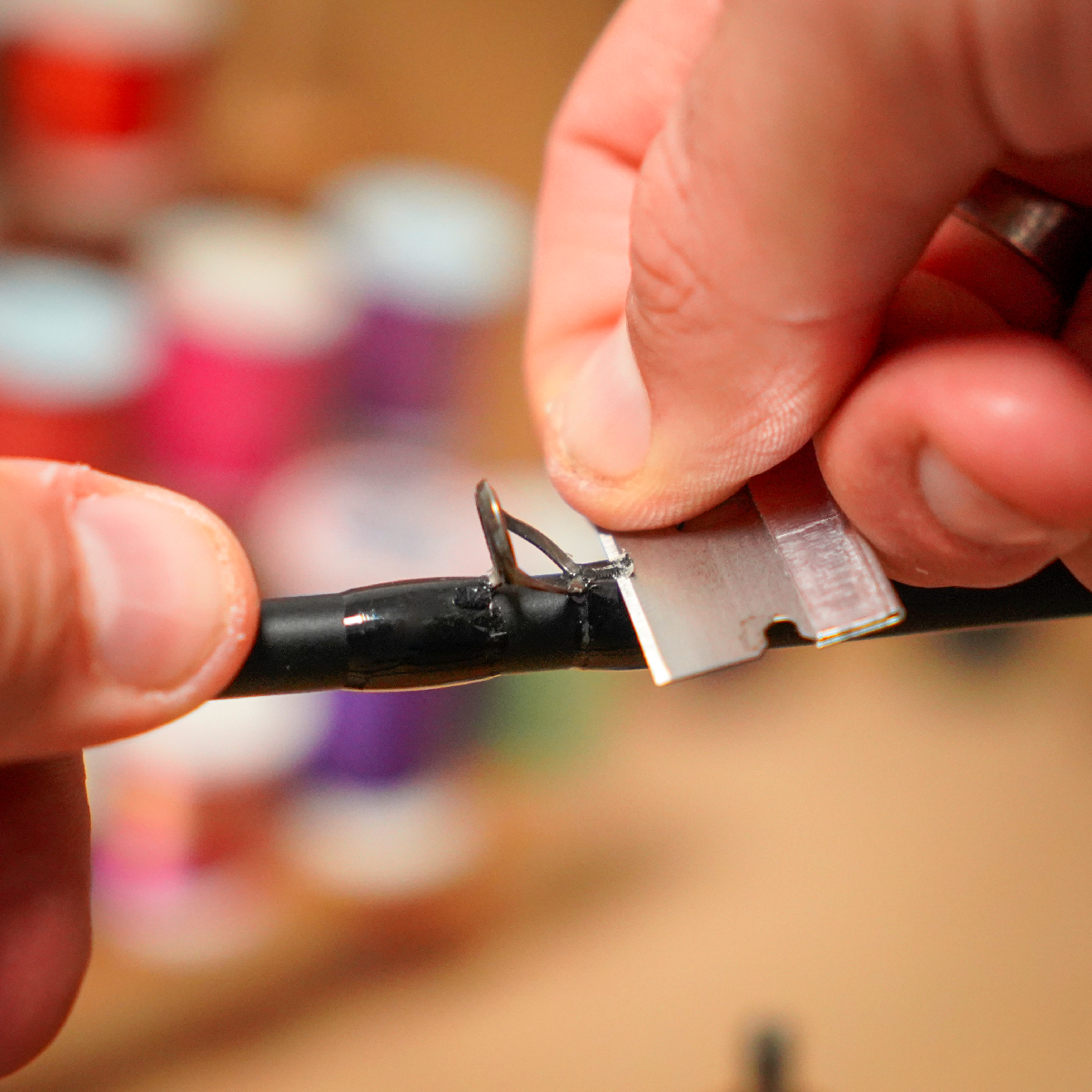
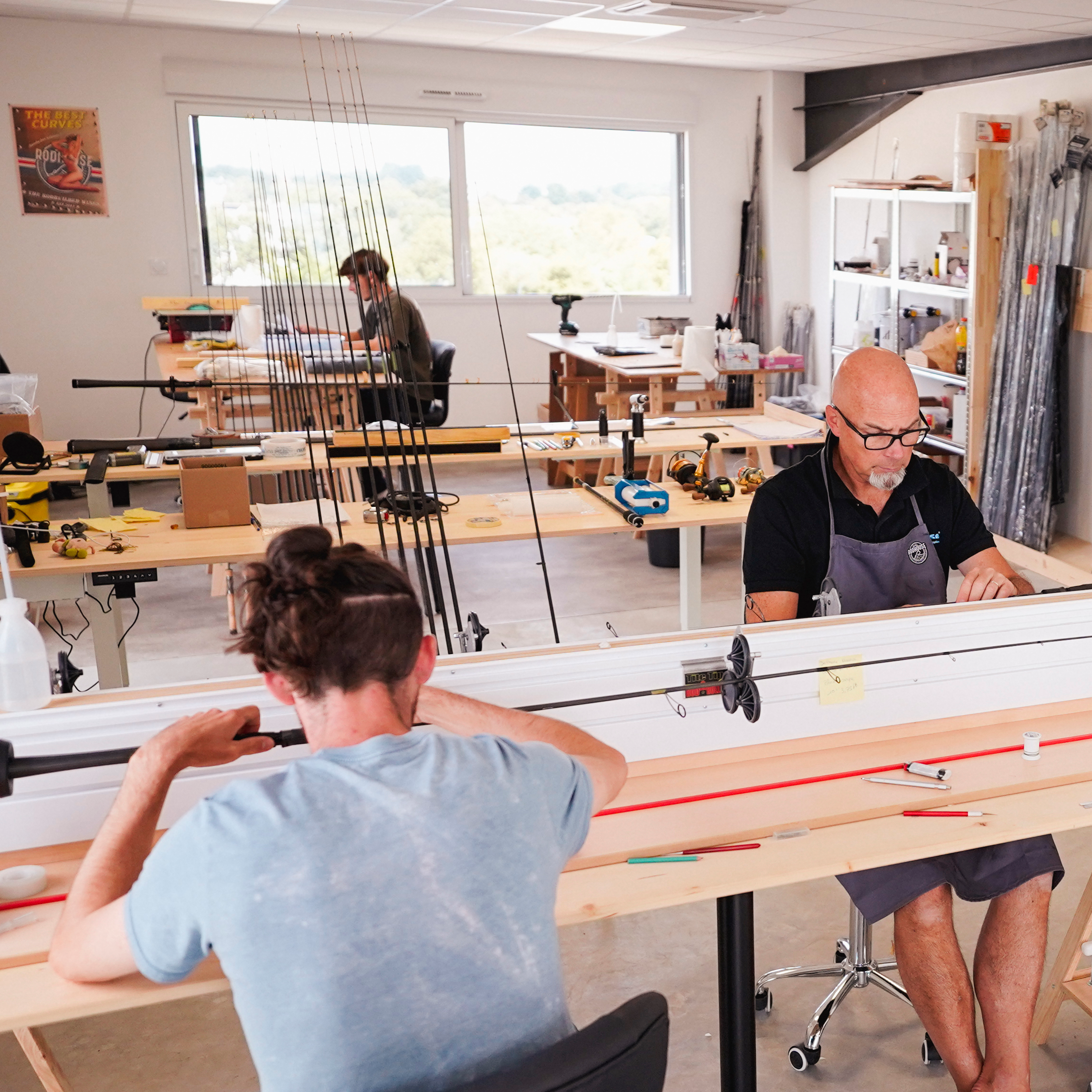
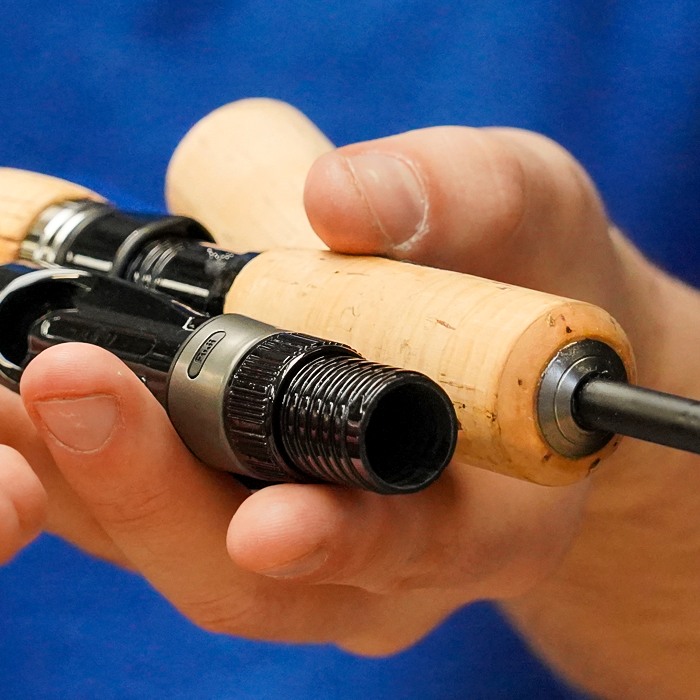
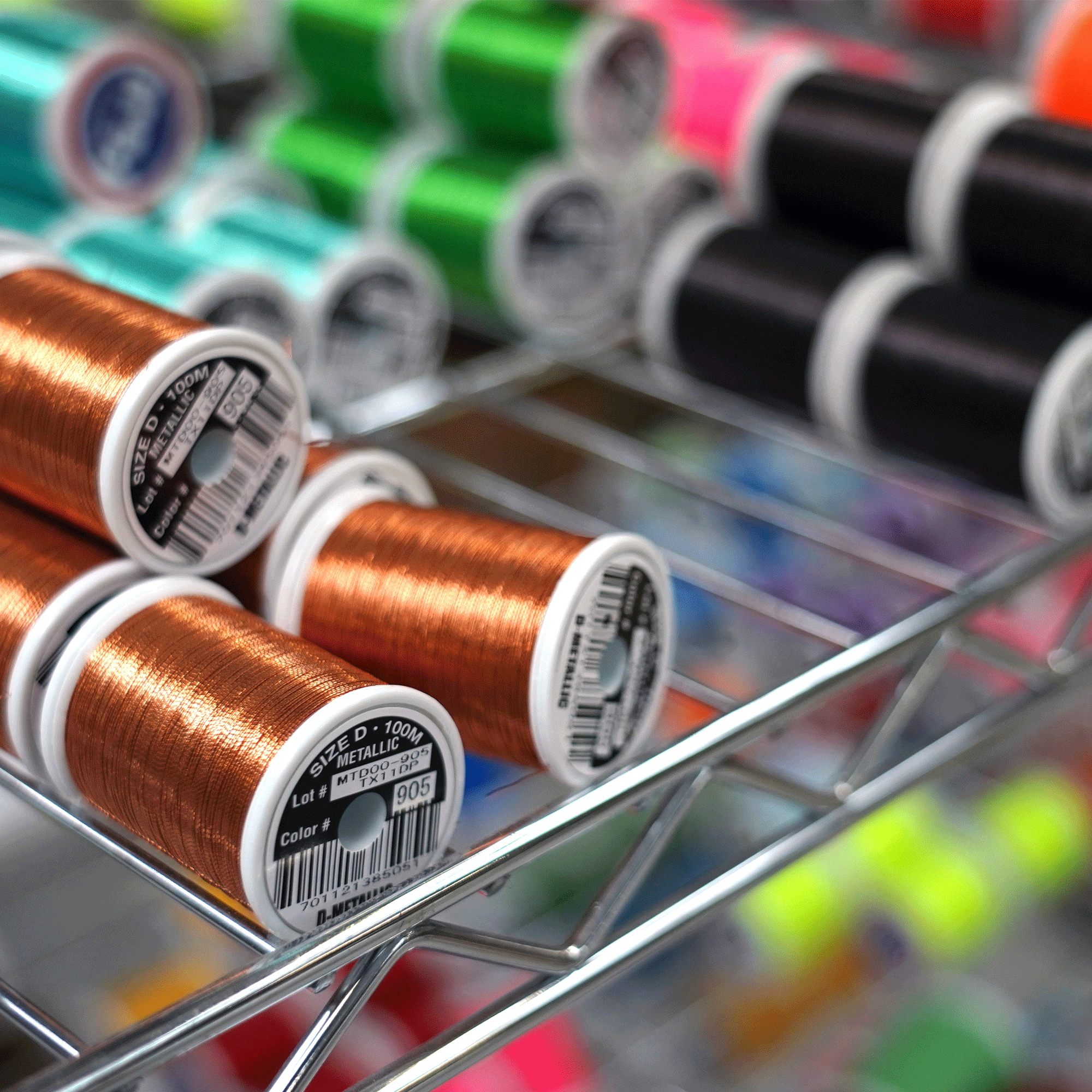

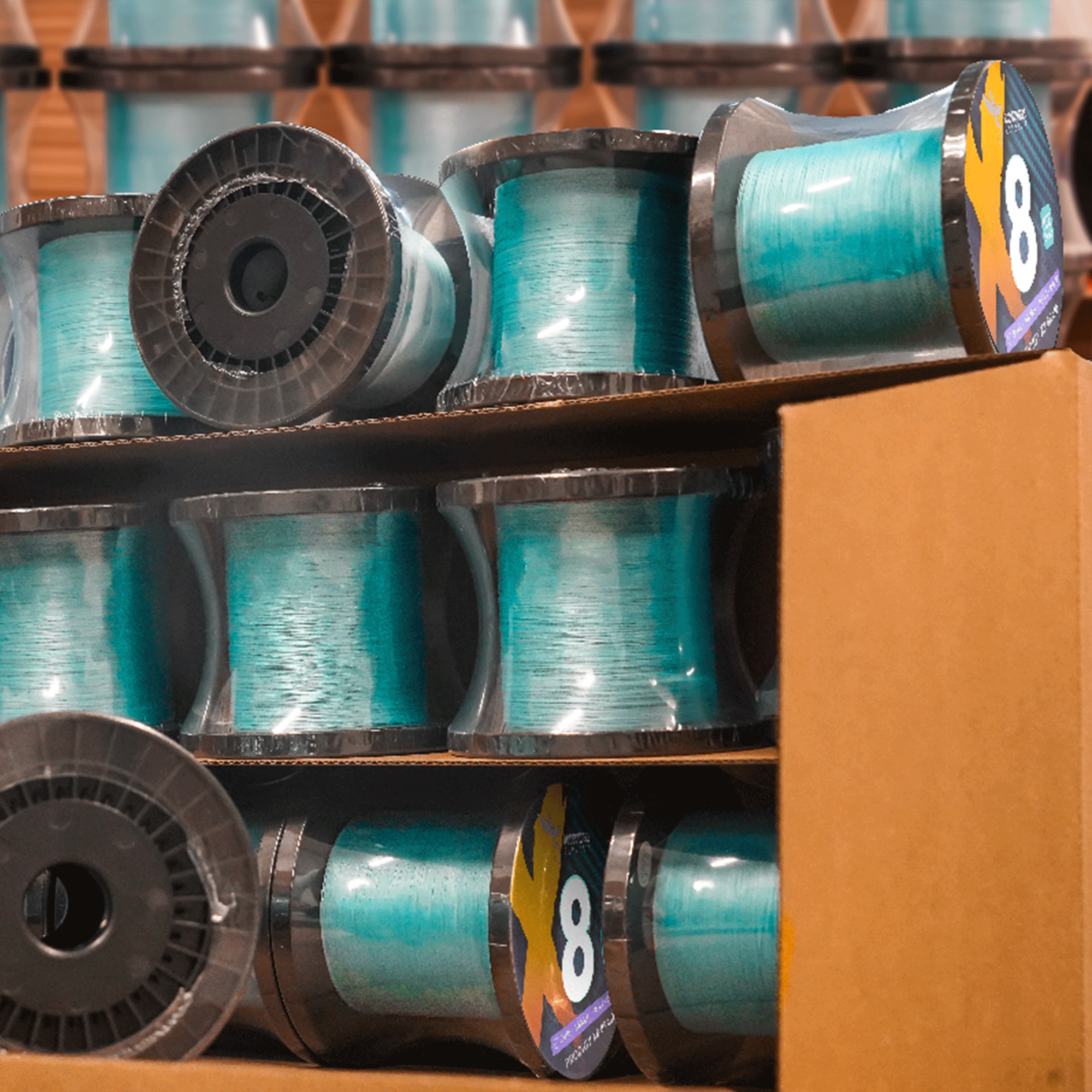
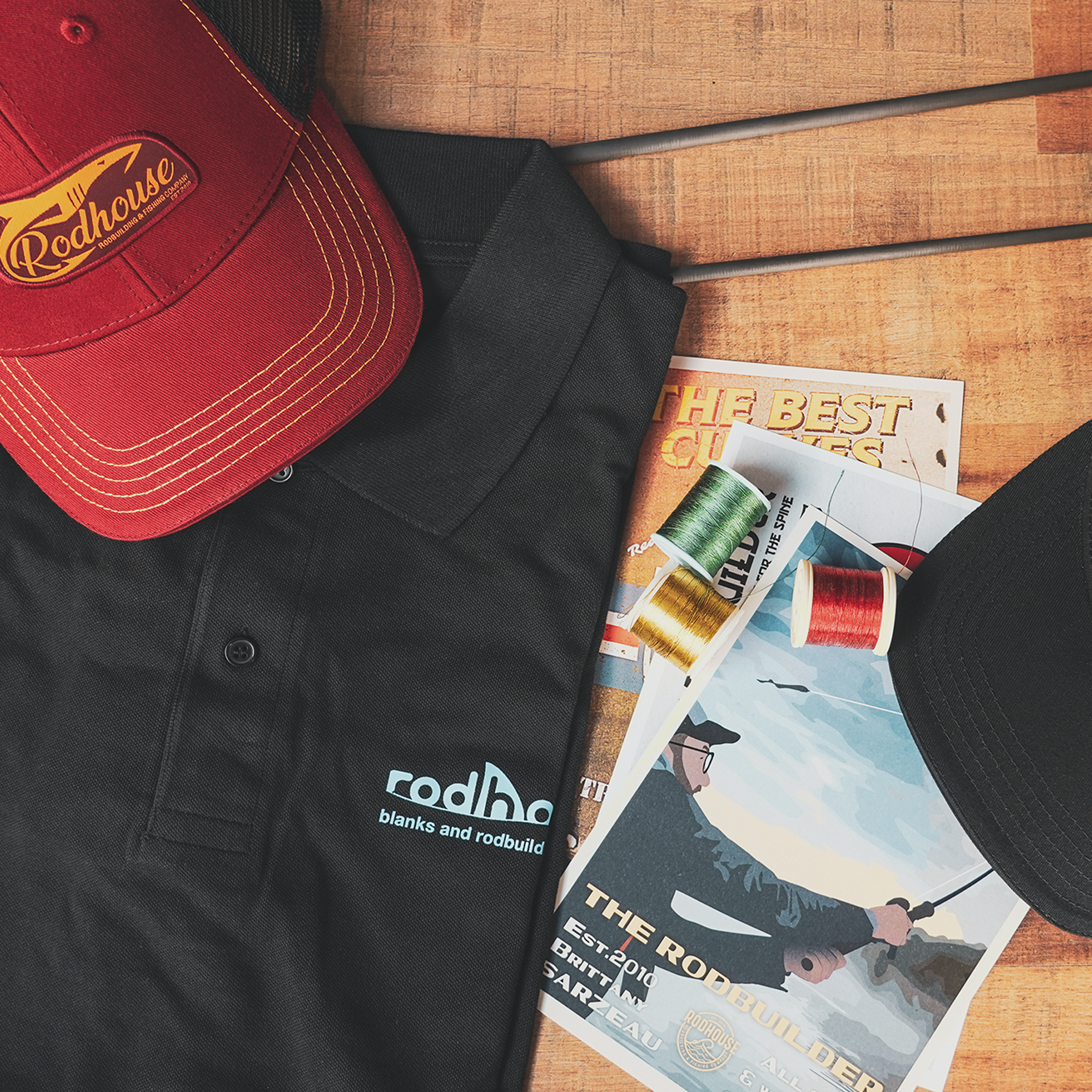
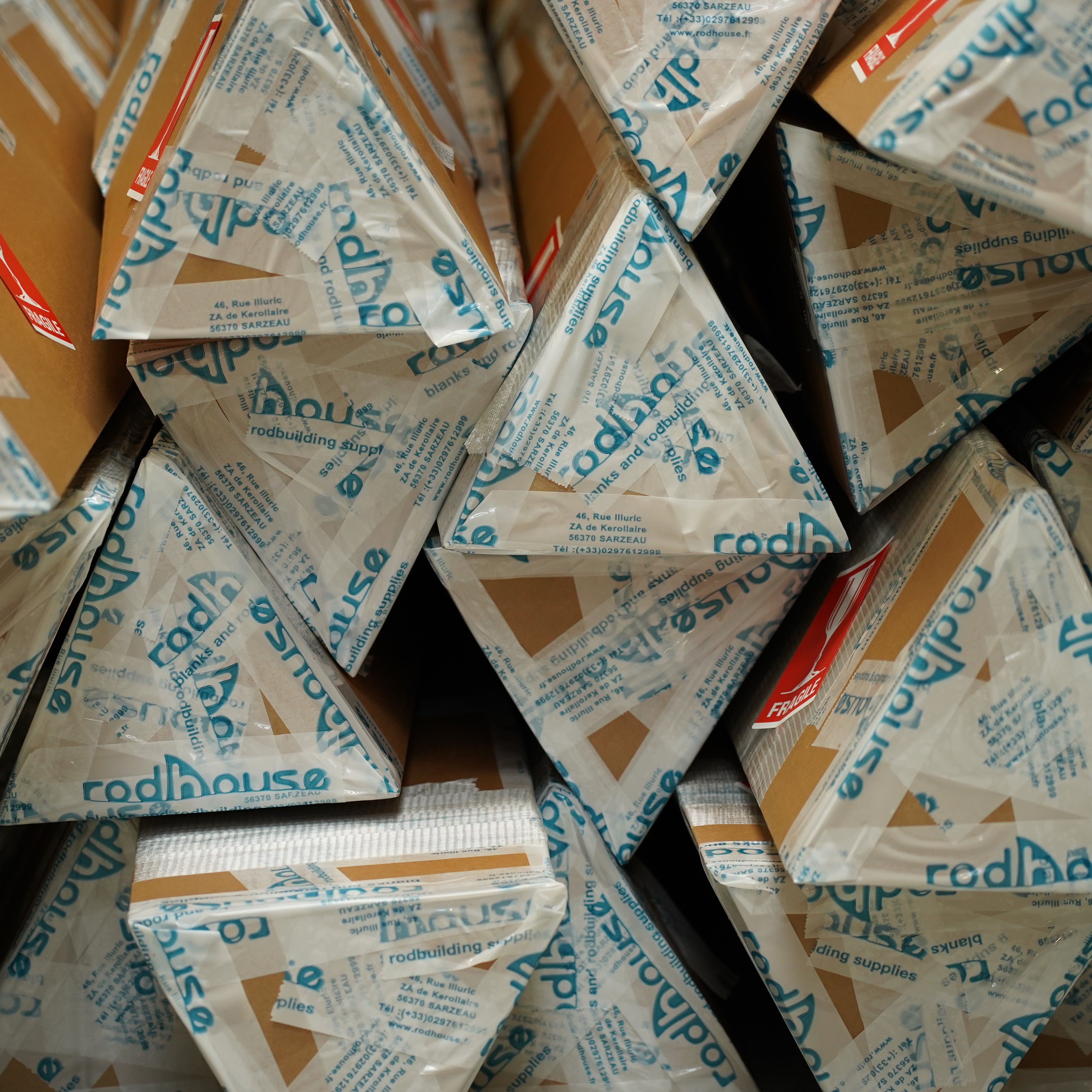


Leave a comment
All comments are moderated before being published.
This site is protected by hCaptcha and the hCaptcha Privacy Policy and Terms of Service apply.